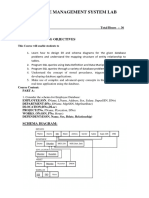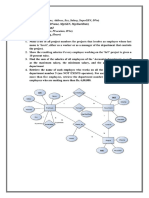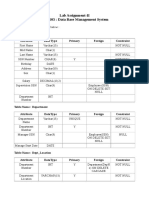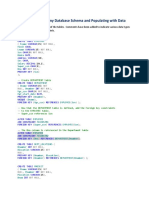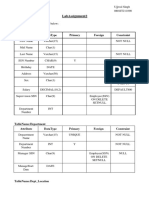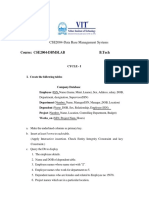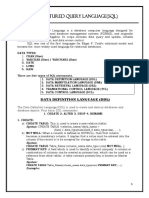0% found this document useful (0 votes)
83 views19 pagesDBMS Lab Practical File DTU
The document describes experiments to implement DDL, DML, aggregate functions and joins in SQL on an organization database. It includes code to create tables, insert data, and write queries to retrieve aggregated data and join tables.
Uploaded by
yaleke8582Copyright
© © All Rights Reserved
We take content rights seriously. If you suspect this is your content, claim it here.
Available Formats
Download as DOCX, PDF, TXT or read online on Scribd
0% found this document useful (0 votes)
83 views19 pagesDBMS Lab Practical File DTU
The document describes experiments to implement DDL, DML, aggregate functions and joins in SQL on an organization database. It includes code to create tables, insert data, and write queries to retrieve aggregated data and join tables.
Uploaded by
yaleke8582Copyright
© © All Rights Reserved
We take content rights seriously. If you suspect this is your content, claim it here.
Available Formats
Download as DOCX, PDF, TXT or read online on Scribd
/ 19














